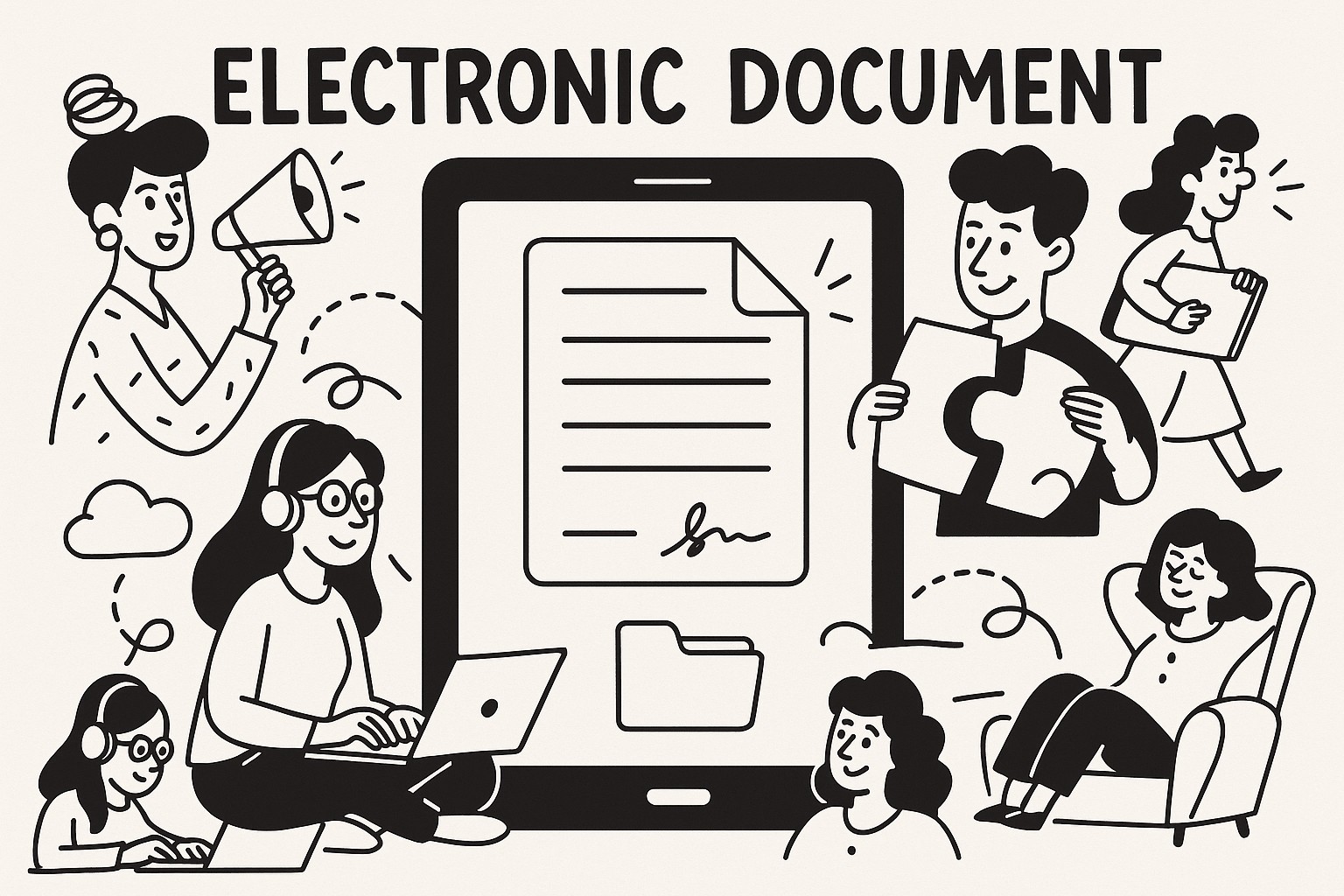
Electronic Document Definition and Examples
Understanding Electronic Documents for e-Signing
An Electronic Document refers to any document that is created, stored, and managed in a digital format. Unlike traditional paper documents, electronic documents can be easily shared and signed using e-signature platforms like GoodSign. Let's explore what electronic documents are, their benefits, and examples of how they are commonly used in e-signing.
Key Characteristics of Electronic Documents
- Digital Format: Electronic documents exist in a digital format, making them easy to store, access, and transfer. They can be created using various software applications like word processors or specialized document management systems.
- Editable: Electronic documents are often editable, which means they can be modified without the need to create new documents from scratch.
- Searchable: One of the significant advantages is the searchability of the text within these documents, allowing for quick retrieval of information.
- Secure: They can be encrypted and equipped with permission settings to ensure only authorized individuals can access or edit them, enhancing security and privacy.
Benefits of Electronic Documents
- Convenience: Easily shareable via email or cloud services, eliminating the need for physical transportation.
- Cost-Effective: Reduce costs associated with printing, mailing, and physical storage.
- Efficiency: Streamline workflow processes by allowing for faster preparation, signing, and distribution.
- Eco-Friendly: Contribute to environmental sustainability by reducing paper consumption.
Examples of Electronic Documents Used in e-Signing
- Contracts: Legally binding agreements between two or more parties that require signatures. Converting contracts into electronic documents allows for quick and secure signing through platforms like GoodSign.
- Invoices: Billing statements can be generated and sent electronically, making it easier for clients to review and sign off if necessary.
- Consent Forms: Often seen in medical, educational, and business settings, electronic consent forms expedite the process of obtaining necessary approvals.
- Legal Filings: Documents like affidavits, motions, and other legal paperwork can be signed and filed electronically, simplifying court processes.
- HR Documents: Employment contracts, non-disclosure agreements, and onboarding forms can be handled efficiently using electronic documents.
How GoodSign Enhances Electronic Document Handling
By utilizing GoodSign, you leverage the power of efficient e-signing with electronic documents without incurring hefty subscription fees. Every envelope sent costs just $1.50, with all the features and integrations you need to get started right away. There's no need to designate a limited number of users or worry about tiered plans—GoodSign provides a straightforward, pay-per-use model.
Transitioning to electronic documents and using e-signing platforms like GoodSign can revolutionize how you handle documentation, offering greater flexibility, security, and efficiency.
Explore more about how GoodSign can simplify your e-signing needs at GoodSign.io.